What Other Animals Live With Arctic Wolves



Arctic Wolf
Polar wolf, White wolf, Melville Isle wolf
Arctic wolves (too known as the white wolf or polar wolf) are a sub-species of grey wolves. They spend their lives in the Arctic tundra, college than the northern tree line. They are the only wolf in the world with their coloring, unique due to the environs where they live. Due to its isolation, this wolf is not under threat by habitat destruction and hunting equally its southern relatives are, and is the only wolf sub-species that is not threatened.
Photos with Arctic Wolf

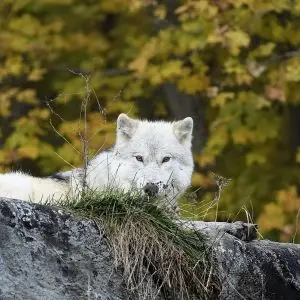
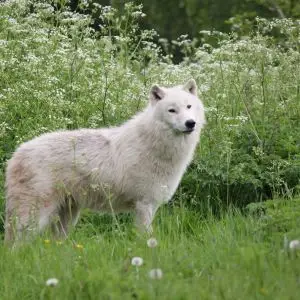
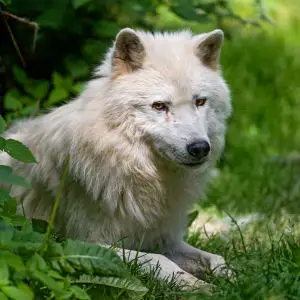
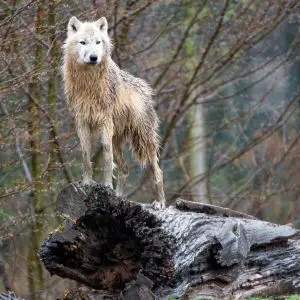
View 24 more photos of Arctic Wolf
Video
Distribution
Geography
Arctic wolves are establish in the Arctic regions of Greenland and North America. They live amidst the Arctic tundra on country that is covered with ice and snowfall except briefly in the summer months. They also occur in the Arctic region's glacier valleys, northern rolling hills, and ice fields by shallow lakes.

Biome
Climate zones

Habits and Lifestyle
Arctic wolves are social animals and live in packs numbering seven to 8 related animals. Inside the pack, there is a very complex social order, and every member has its place in the dominance hierarchy. Each wolf knows its position through body posture advice. The pack'southward leader is a male, and ordinarily simply he and the dominant female mate. Notwithstanding, all pack members share the responsibility of looking later the pups. These animals do not hibernate, because during the winter much of the species they casualty on are especially agile at this time. They are awake either during the day or at dark simply are generally diurnal. Arctic wolves chase in packs and and so share the kill. A wolf has a few different means of communication. They howl for many reasons, such equally signaling their location to other pack members or bringing members together for a hunt. A howl can also warn neighboring wolves to stay away from their territory. They use scent markings to communicate territorial boundaries, as well equally their presence, to other wolves.
Diet and Nutrition
Arctic wolves are predatory carnivores and consume a broad variety of food, hunting in packs for musk-oxen and caribou. They likewise consume Arctic hares, lemmings, ptarmigan, and other small animals, such every bit nesting birds.
Mating Habits
Chill wolves are monogamous; within the pack, only the alpha male and beta female person are immune to mate. Breeding takes place in winter from January to March. Later a gestation of 61-63 days, v to 7 pups are born, each weighing about a pound. The newborns are brown in color, and are helpless, beingness bullheaded and deaf, and they depend upon the whole pack to protect them. Their eyes open in virtually x days. Their female parent is very protective, not assuasive other pack members into the den until the pups are 2 weeks quondam. Pups are weaned after about 2 months. Later these early on stages of development, the fathers help raise the pups by didactics them to play and chase. Pups are strong enough at six months old to travel and will join the rest of the pack to larn survival skills. Males become reproductively mature at one year former and females at most the age of ii.
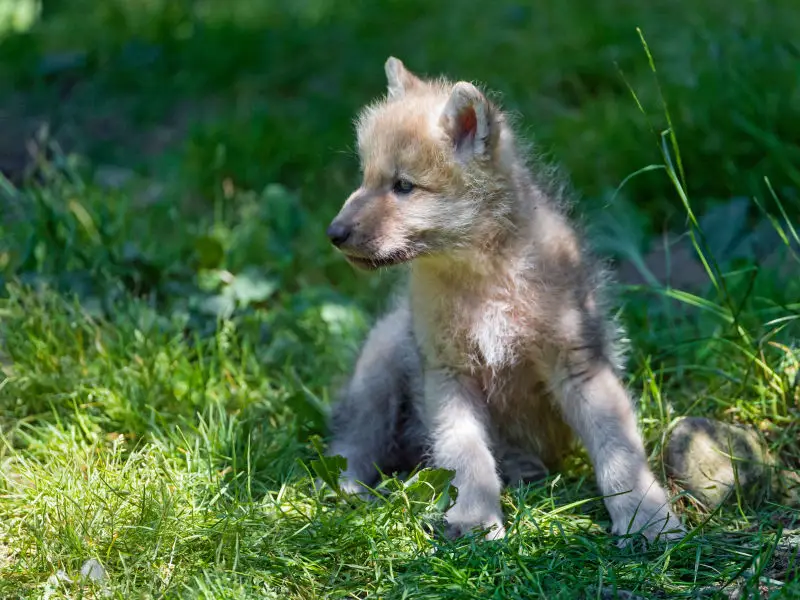
Population
Population threats
Unlike other wolf species, the Arctic wolf hardly ever comes into contact with people and is not nether threat past persecution or hunting. Still, industrial development is a threat, an increasing number of roads, mines, and pipelines encroaching on its territory and interrupting its nutrient supply. Some other threat to this species is climate modify. Recent extreme weather variations have made finding food more difficult for Arctic hares and musk-oxen to find food, causing their numbers to pass up significantly, and therefore affecting this traditional food supply for the Arctic wolf.
Population number
According to the Absurd Antarctica resource, the total population size of the Arctic wolf is effectually 200,000 individuals. Currently, this species is classified as To the lowest degree Business concern (LC) on the IUCN Cherry-red List.
Ecological niche
As cannibal hunters, these wolves assistance to command the numbers of animals such every bit musk-oxen, Arctic hares, and caribou, as well as other animals inhabiting the region.
Fun Facts for Kids
- When Arctic wolves hunt as a pack, ane adult member volition e'er remain behind as a puppy sitter.
- Arctic wolves travel much farther than wolves of the forest when looking for food, and they sometimes do not eat for several days.
- The Chill wolf can cope with sub-nix temperatures likewise every bit five months of total darkness each year.
- During the wintertime, these wolves grow a second layer of fur to protect themselves against the cold.
- Like many other animals, such as domestic dogs, Chill wolves accept a mechanism that maintains their paws at a temperature lower than the trunk core, thus minimizing heat loss in them, although they are in contact with the frozen ground. Claret going into their paws heats blood that is leaving, preventing their core from getting cooled by the loss of oestrus through their feet. The feet of ducks and penguins have similar mechanisms.
- All wolf pups are born with blueish eyes, these later changing to a brown or golden color.
References
More Fascinating Animals to Learn Most
Source: https://animalia.bio/arctic-wolf
Posted by: joneshany1989.blogspot.com

0 Response to "What Other Animals Live With Arctic Wolves"
Post a Comment